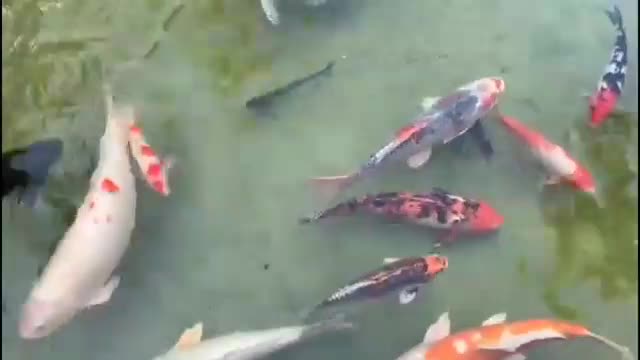Premium Only Content

My fish collection Golden fish, White fish, Black fish, 🐠🐟🐡 | Every kind of fishes you'll see here
Fish : The term "fish" generally applies to three groups: bony fishes, cartilaginous fishes and the so-called jawless fishes (e.g. lampreys). At present more than 24,000 recent species are known. This makes them by far the largest group within vertebrates: Every second extant vertebrate species is a fish-species.
Fish live in nearly all aquatic habitats: in Tibet loaches are found in hot springs at 5,200 m above sea level, in Lake Titicaca - the highest large lake of the world (3,812 m above sea level) - several species of killifishes live, and the deep-sea specialists are to be met as deep as 7,000 m below surface. Besides strictly freshwater or marine fishes we know about 200 species, spending their lives partly in fresh and partly in salt water (e.g. eel, salmon).
Some species developed organs for air-breathing which enable them to survive out of water, e.g. in seasonally drying up swamps, and others even undertake regular excursions on dry land (e.g. mudskippers).
Fishes are extremely important to man, on the one hand as food (exploitation of natural resources, aquaculture), on the other hand for recreation and leisure activities (game fishing, aquariums). They also serve as indicator species for water pollution.
The scientific fish collection
Holdings
Nearly 1.000,000 alcohol-preserved specimens (c. 150,000 lots)
About 1,800 skeletons (mounted or disarticulated on plates).
About 2,000 taxidermy specimens.
Type collection
Some 2,000 species are vouched by type specimens.
Some 2,000 species are vouched by type specimens.
Special features
Material from South America (Natterer, Steindachner); Heckel-, Kner-, Steindachner-types.
Use of the scientific collection/Loan of scientific material
Examination of our holdings is possible at NHM by arrangement. Because of losses of material and several not-returned specimens in the past no more loans are available. Only tissue samples can be sent by mail by appointment.
Catalogue
70 % of the holdings are catalogued on card-index (binary names sorted alphabetically). Special card-indices exist for the skeleton collection, taxidermy specimens and for type specimens. Computer cataloguing has started in 1998.
-
 LIVE
LIVE
Josh Pate's College Football Show
4 hours ago $0.65 earnedSEC Disaster Saturday | Major CFP Earthquake Coming | Officiating Is A Disaster | New Studio Debut
212 watching -
 LIVE
LIVE
Adam Does Movies
7 hours agoGladiator II Spoiler Conversation With Hack The Movies
515 watching -
 24:10
24:10
Bwian
7 hours agoI Don't Know What I'm Doing in Fortnite, But I Still Won...
2.35K1 -
 19:30
19:30
DeVory Darkins
9 hours ago $34.69 earnedJoe Rogan MOCKS The View as Bill Maher HUMILIATES Woke Scientist
77.2K115 -
 LIVE
LIVE
Scottish Viking Gaming
11 hours ago🔴LIVE | SUNDAY FUNDAY | Jump into my Sons of the Forest Game | DOO EET NOWWA!
541 watching -
 24:01
24:01
Winston Marshall
4 days agoThe TRUTH About The UK Farmer Protest What No One Is Talking About...
75.1K165 -
 3:21:56
3:21:56
Tate Speech by Andrew Tate
15 hours agoEMERGENCY MEETING EPISODE 93 - ME TOO!
273K176 -
 3:21:42
3:21:42
FRENCHY4185
11 hours agoPRESTIGE AND CAMO GRIND : BLACK OPS 6
79K2 -
 1:29:47
1:29:47
Real Coffee With Scott Adams
11 hours agoEpisode 2669 CWSA 11/24/24
105K38 -
 13:52
13:52
Hershberger's Kitchen
22 hours agoTwo Delicious Dip and Spread Recipes to Try, Inspirational Thought
90.8K6